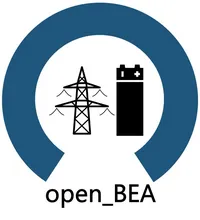Project open_BEA
Creation and integration of battery storage models and scenarios of electromobility into an open source/open data platform to answer various power grid-related questions
The imminent coupling of the transport sector with the electricity sector and the possibilities of grid integrated energy storage are creating new potentials and challenges. For example, the potential of grid integrated storage for grid relief and future network planning in the course of the ongoing energy transition has yet to be investigated. Furthermore, it remains an open question, to which extend battery electric vehicles are capable to serve as a flexibility option in a future power grid rather than causing additional grid load in times of peak demand. Answering these questions requires a very detailed overall system model that maps battery storage, electric mobility scenarios and time series of future electricity generation in distribution grids.
In open_BEA, a holistic open-source modeling tool, which will be made accessible to a large number of users, is developed in cooperation with the Reiner Lemoine Institute Berlin and ZAE Bayern. The simulation platform allows detailed aging and performance modeling of lithium-ion and redox-flow storage systems as well as time series simulations of the active and reactive power flow for an entire distribution network with a large number of generation, load and storage units. Using this software tool, for example, it will become possible to model how stationary storage systems must be optimally positioned, dimensioned and operated in order to provide network-related services, such as the provision of reactive power. Likewise, parameterized simulations can be used to check which storage technology is cost-optimal for a given application.
For more information, see: https://openbeaproject.wordpress.com/

Acknowledgement
This research project is funded by the Federal Ministry for Economic Affairs and Energy (BMWi) within the scope of the programme "6. Energieforschungsprogramm" (grant number 03ET4072A) and cared by Project Management Jülich. The responsibility for the content of this publication lies with the author.
| Project Members | ||||
|---|---|---|---|---|
| dotzauer(at)mytum.de |
|
|||
| daniel.kucevic(at)tum.de |
|
|||
| +49 (89) 289 - 26920 | benedikt.tepe(at)tum.de |
|
||
